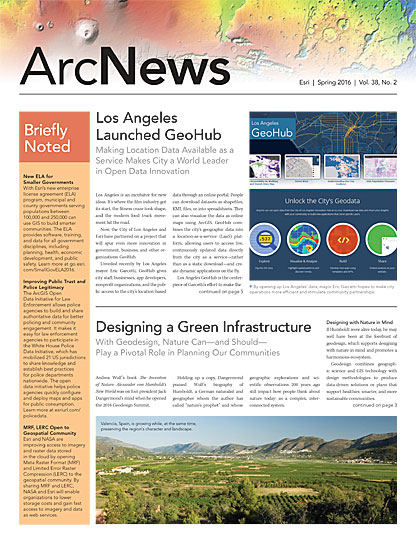Crossing Borders
The American Association of Geographers (AAG), together with others, has been working for more than a decade to reauthorize the No Child Left Behind Act. On December 10, US president Barack Obama signed the new Every Student Succeeds Act (ESSA) into law. The ESSA is the successor to No Child Left Behind and is now the primary federal law dealing with K–12 education policy.
The ESSA took effect immediately, but it will take several months for the US Department of Education to fully implement the new programs established by the law. The AAG has been monitoring the 2015 congressional reauthorization process closely and advocating for new programs to be included that support geography education. We are pleased with several programs in the law that advance K–12 geography. These include the following:
- A new grant program for history, civics, and geography is being created as part of a larger series of grant programs that includes teacher incentives and literacy education funding.
- States are authorized to use certain funds to support school districts in developing activities that foster a well-rounded education, and those activities include geography.
- School districts, in turn, are required to use some grant funds to foster opportunities for a well-rounded education, and geography is one of the subjects specified for these expenditures.
- Grants to magnet schools must be related to a series of activities, including improving students’ knowledge of various subjects—one of which is geography.
- Grants to aid in educating Native American students are focused on raising achievement in various subjects, including geography.
- The law defines a “well-rounded education” for K–12 students, and it incorporates instruction in geography.
- The law identifies geography as a core subject.
Just before he signed the bill, Obama said, “Now the hard work begins.” And he is right.
As the federal government works to enact the law and states and districts adjust to their newfound flexibility, it will be incumbent on the geographic and GIS communities to engage with educational leaders across the nation to stress the importance of geography as a science, technology, engineering, and mathematics (STEM) discipline that is critical to job growth. The recent report from the US Government Accountability Office on American students’ dearth of geography knowledge will help in conveying this message. So will the widely endorsed AAG Resolution Supporting K–12 Geography Education, which urged the US government to include geography and geospatial learning in its education reform proposals.
The US Department of Labor has repeatedly indicated that geographic technologies are among the most important emerging and evolving fields in the technology industry for job creation. Public and private sector entities are increasingly turning to GIS, GPS, and related technologies to handle complex problems and assist in organizational planning and operations. Additionally, a heightened focus on global affairs has made understanding the economic, political, cultural, and geographic components of globalization increasingly important to all students and policy makers.
While the ESSA is not perfect, it does provide promising new pathways for geography teachers (and other educators who are interested in geographic learning at the K–12 level) to work with states and local education agencies to seek and receive federal grant funding for geography-focused activities.
Efforts to strengthen geography education across the nation also received a major boost when Esri president Jack Dangermond offered free ArcGIS Online accounts to all K–12 schools in the United States. This pledge, which was made in connection with the Obama administration’s ConnectED initiative, has the potential to greatly improve geography and GIS education in K–12 classrooms and is synergistic with the new ESSA. The AAG is working closely with Esri to build a national network of GeoMentors as well to support GIS implementation in classrooms. So far, more than 1,000 participants have joined these efforts.
We at the AAG look forward to working with the Esri user community to strengthen geography and GIS education in all US schools.
For questions about the new law or geography education policy in general, reach out to John Wertman or Doug Richardson.


